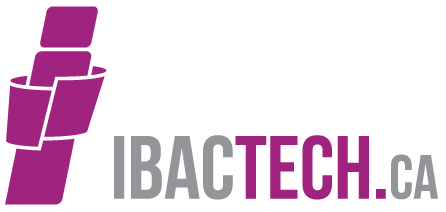Use of Electronic Signatures for Insurance Transactions
Traditionally, your personal signature on a piece of paper was sufficient to execute just about any type of document regardless of what it was and where you were physically signing it. This practice often took place in the presence of another individual who was able to witness your signature being written. If the signee was not personally known to the person collecting their signature, the signee would normally be required to produce some form of acceptable identification (e.g., Driver’s Licence, provincial health card, a birth certificate, etc.) in order to verify their identity. The person’s mere physical presence was often assumed to corroborate their consent. It was also assumed that both parties had a mutual and clear understanding of what was being signed and for what purpose. Documents were sometimes exchanged and the transaction was essentially complete. For many years, transactions requiring a written signature were accomplished in this simple but effective manner.
When a document is signed, generally as part of implementing or administering a contract, the signature embodies several key elements essential to validating the agreement. These
characteristics would include:
- identity (being able to authenticate the person to be who they claim to be);
- consent (agreeing and being legally permitted to sign and execute the document they
are signing); - disclosure (being fully aware of the implications or any of the terms that may be
attached to what they are signing); and - a record (being able to produce some kind of evidentiary data proving the existence of
the transaction containing the signature).
Often when signing documents, we carry out this process in the physical presence of the person requiring these signed documents. It is relatively easy to identify the person who is required to sign and to have obtained their consent, signaled by their willingness to sign. It would be normal to expect that any terms attached to this document would have been explained or disclosed prior to the person offering and subsequently agreeing to sign the actual document.
After signing the document, all parties could easily receive a copy or some form of documentation about the transaction that just took place.
Ultimately, being able to establish the identity of an individual that has, with their informed consent, signed a document and was fully aware of all terms and conditions attached to that document, gives us the all‐important and the necessary comfort of knowing that what was signed could be considered legally relevant
As technology continues to advance, so does our business and the manner in which we conduct that business. Business is not just conducted locally anymore. Borders of every kind are
disappearing as trade (and particularly electronic trade) becomes more ubiquitous with technology supporting the trade we conduct locally, nationally, and even globally, for both
personal and business reasons. But however business is conducted, in person, on paper, or electronically, the same legal principles and expectations for protection still apply, for the benefit of all parties
The adaptation of commerce to technological developments includes how signatures are used in a world that requires far less face‐to‐face interaction compared to what we have seen in decades past. But how does this translate when performing a business transaction when your physical presence is not possible or is no longer required? The same essential elements must be present in order to ensure that agreements made are fair and legitimate.
Providing our signature on any legitimate document is no less relevant today than it has been in the past. However, the signature of the future is not just about penmanship on a piece of paper at a specific place and time; rather it is about the embodiment of those characteristics above but captured in an electronic manner.
The technology behind an electronic signature must tell us that the signee is a unique individual so that we can distinguish who they are and be assured they are who they claim to be. We must be confident that other individuals would not be able to impersonate an individual’s unique electronic identity.
An electronic signature must support evidence that an individual’s identity is unique and that the signature obtained is genuine.
Knowing that an individual’s identity has been verified, we must also have confidence that the signee not only understands but also agrees with the nature and purpose of the document he or she is signing. It is important to recognize and acknowledge an individual’s consent to any document bearing their electronic signature.
An individual’s informed consent must be deliberately obtained and recorded in order to establish that he or she clearly understands and agrees to the purpose of the document and the requirement for their electronic signature.
It is important to avoid situations where individuals may be deemed to have offered a signature without full awareness of additional terms attached to the intended transaction. When a person is physically present, these terms are generally available for review and discussion, and are usually made available in written form. However, when presenting additional terms via electronic means, sometimes the material length of what is being disclosed is prohibitive for that individual to review with the care and attention required. There may be temptation to skim over this material thus eliminating the opportunity for the signee to appreciate the significance of the information presented. While this does not absolve the need for understanding what this information contains, the means by which it is delivered can present itself as more of an impediment rather than as a genuine attempt by the person requiring the signature to ensure the signee understands what he or she is signing. With so much electronic commerce taking place through multiple types and ever smaller mobile devices, there is greater onus placed upon the party providing this information to ensure that not only is consent properly obtained, but that any possible options are explored and appropriate effort is made to provide individuals with proper and reasonable disclosure.
The manner in which an electronic signature is obtained must support the full disclosure and intent of the agreement, including all relevant terms or conditions as well as potential options or alternatives, in a format that is easy to review, understand, and acknowledge.
As part of any transaction requiring a person’s signature, there usually remains an official record of the transaction upon its completion. We may be given a duplicate copy or receive an acknowledgement in some other physical or electronic form. This record is considered to be the documentation or evidentiary data supporting the identity, consent, and disclosure of what happened when that person’s signature was captured.
Being able to retrieve and rely on this evidentiary data, especially when a transaction takes place in the physical absence of one or both trading partners, is essential to substantiate and validate an agreement. When signing documents electronically, individuals must be able to rely on and take comfort in knowing there is a record of what, where, when, and how it took place. Collectively, this information can be used to establish a person’s “presence” during the signing process even when he or she may not have been physically present when the document was originally signed. Employing recognized standards for electronic signature technology facilitates this subsequent access to such evidence. Further, the use of standards helps drive down the cost of technology thereby creating efficiencies to help make electronic signatures more widely available to consumers.
Electronic signature technology should employ recognized standards and ensure that details and the record of an electronic signature are traceable and cannot be modified, and contain sufficient evidentiary data to protect the consumer’s interest.
Technology, in its many evolving forms, even including the provision for capturing a customer’s signature electronically, supports a broker’s ability to provide the best customer service possible. Obtaining signatures whether they are physical or electronic is but one aspect of the many exchanges and transactions that occur between consumers and their professional insurance advisors, either in person, on paper, or online. Some consumers prefer to conduct business electronically largely for the efficiency and convenience it provides, and the ability to capture an electronic signature is essential to completing these transactions. Nevertheless, consumers should never be expected to sacrifice their freedom of choice or the access to full information and advice that should accompany any significant financial decision. Consumers are best served when they can leverage convenient and efficient technological advances without compromising on the established protection to which they are entitled.
With proper and well thought out business processes supported by the key characteristics of an electronic signature for insurance transactions, consumers can be confident in the integrity of the electronic signature process.
About IBAC
The Insurance Brokers Association of Canada (IBAC) is the national voice of P&C (Property and Casualty) insurance brokers and an advocate for insurance consumers. By representing the interests of both insurance brokers and their customers, monitoring the industry and bringing about important changes, IBAC aims to uphold insurance brokers’ standards, safeguarding their service and integrity, and ensuring that individual and commercial clients will have professional advice and freedom of choice in their selection of property and casualty insurance coverage.
For more information regarding this document, please contact:
Sheldon Wasylenko, Technology Champion Insurance Brokers Association of Canada
sheldon.wasylenko@rayneragencies.ca
1‐306‐373‐0663 work
1‐306‐221‐1232 mobile
or
Brenda Rose, Technology Champion
Insurance Brokers Association of Canada
brose@fcainsurance.com
1‐416‐486‐2397 work
1‐416‐456‐1490 mobile
Disclaimer
This report is furnished for general information purposes only and is not to be considered legal and or binding. Nothing herein, however, is intended to replace, amend, supersede or otherwise depart from legislative requirements. In the event of any conflict or contradiction between the
provisions of this document and local legislation, applicable laws shall prevail.




